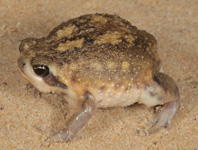Abstract
Two new species of Heteropachylinae Kury, 1994, are described: Magnispina robusta sp. nov. and Magnispina bahiana sp. nov., both from Serra Bonita Natural Reserve, Camacan, Bahia, Brazil. Magnispina robusta sp. nov. is diagnosed by: free tergites II–III with tubercles on their lateral margins, free tergite III without median armature, dorsal anal operculum with a robust bifurcate median apophysis, femur IV slightly curved (convex side outwards ) in dorsal view and straight in lateral view, with a basal, a robust median and a subapical apophyses on dorsal face. Magnispina bahiana sp. nov. is diagnosed by: medium size of the median apophysis on free tergite II, free tergite II with bifurcate tubercles on its lateral margins, femur IV with a robust dorsomedian apophysis and prolateral row of tubercles increasing in size apically. We performed a cladistic analysis based on a modified version of the character matrix of the previous revision of the subfamily. We retrieved a single most parsimonious tree (308 steps, CI = 0.43 and RI = 0.61), which corroborates the monophyly of Heteropachylinae, Magnispina Mendes, 2011, Pseudopucrolia, Roewer, 1912 and Heteropachylus Roewer, 1913. The two latter genera comprise a clade that is sister-group to Magnispina.
References
Bremer, K. (1994) Branch support and tree stability. Cladistics, 10, 295–304.
https://doi.org/10.1111/j.1096-0031.1994.tb00179.x
DaSilva, M.B, Pinto-da-Rocha, R. & DeSouza, A.M. (2015) A protocol for the delimitation of areas of endemism and the historical regionalization of the Brazilian Atlantic Rain Forest using harvestmen distribution data. Cladistics, 31, 692–705. https://doi.org/10.1111/cla.12121
Farris, J.S., Albert, V.A., Källersjö, M., Lipscomb, D. & Kluge, A.G. (1996) Parsimony jackknifing outpermorfs neighbor-joining. Cladistics, 12, 99–124.
https://doi.org/10.1111/j.1096-0031.1996.tb00196.x
Goloboff, P.A. & Farris, J.S. (2001) Methods for Quick Consensus Estimation. Cladistics, 17, 26–34.
https://doi.org/10.1111/j.1096-0031.2001.tb00102.x
Goloboff, P., Farris, J.S. & Nixon, K.C. (2008) TNT, a free program for phylogenetic analysis. Cladistics. 24, 774–786.
https://doi.org/10.1111/j.1096-0031.2008.00217.x
Kury, A.B. (1994) Early lineages of Gonyleptidae (Arachnida, Opiliones, Laniatores). Tropical Zoology, 7, 343–353.
https://doi.org/10.1080/03946975.1994.10539264
Kury, A.B. (2003) Annotated catalogue of the Laniatores of the New World (Arachnida, Opiliones). Revista Ibérica de Aracnología, Volumen Especial Monográfico, 1–337.
Kury, A.B. (2013) Order Opiliones Sundevall, 1833. Zootaxa, 3703 (1), 27–33.
https://doi.org/10.11646/zootaxa.3703.1.7Kury, A.B. & Medrano, M. (2016) Review of terminology for the outline of dorsal scutum in Laniatores (Arachnida, Opiliones). Zootaxa, 4097 (1), 130–134.
https://doi.org/10.11646/zootaxa.4097.1.9
Kury, A.B. & Villarreal-Manzanilla, O. (2015) The prickly blade mapped: establishing homologies and a chaetotaxy for macrosetae of penis ventral plate in Gonyleptoidea (Arachnida, Opiliones, Laniatores). Zoological Journal of the Linnean Society, 174, 1–46.
https://doi.org/10.1111/zoj.12225Mello-Leitão, C.F. (1928) Opiliões de Matto-Grosso e Pernambuco. Boletim do Museu Nacional, 4, 9–13.
Mello-Leitão, C.F. de (1935) A propósito de alguns opiliões novos. Memórias do Instituto Butantan, 9, 369–411.
Mendes, A.C. (2011) Phylogeny and taxonomic revision of Heteropachylinae (Opiliones: Laniatores: Gonyleptidae). Zoological Journal of the Linnean Society, 163, 437–483.
https://doi.org/10.1111/j.1096-3642.2011.00706.x .2011.00706.x
Mendes, A.C. & Kury, A.B. (2003) A review of Thaumatoleptes Roewer (Arachnida, Opiliones, Gonyleptidae). Revista Ibérica de Aracnología, 7, 151–156.
Nixon, K.C. (1999) Winclada (BETA) ver. 1.00.08. Published by author, Ithaca, New York, USA. Available from: http://www.cladistics.com/aboutWinc.htm (accessed 21 April 2016)
Perty, J.A.M. (1833) Delectus Animalium Articulatorum quae in itinere per Brasiliam Annis MDCCCXVII - MDCCCXX Iussu et Auspiciis Maximiliani Josephi I. Bavariae Regis Augustissimi, percato collegerunt Dr J. B. de Spix et Dr. C. F. Ph. de Martius. Vol. 3. Impenisis editoris, Monachii, 224 pp.
Pinto-da-Rocha, R. (1997) Systematic review of the Family Stygnidae Opiliones: Laniaores: Gonyleptoidea). Arquivos de Zoologia, 33 (4), 163–342.
http://dx.doi.org/10.11606/issn.2176-7793.v33i4p163-342
Pinto-da-Rocha, R. & Giribet, G. (2007) Chapter 4. Taxonomy. In: Pinto-da-Rocha, R., Machado, G. & Giribet, G. (Eds.), Harvestmen: the biology of Opiliones. Harvard University Press, Cambridge, Massachusetts & London, pp. 88–246.
https://doi.org/10.5431/aramit3510
Pinto-da-Rocha, R., Bragagnolo, C., Marques, F.P.L. & Antunes, M. (2014) Phylogeny of harvestmen family Gonyleptidae inferred from a multilocus approach (Arachnida: Opiliones). Cladistics, 30, 519–539.
https://doi.org/10.1111/cla.12065
Roewer, C.F. (1912) Die Familien der Assamiiden und Phalangodiden der Opiliones-Laniatores (= Assamiden, Dampetriden, Phalangodiden, Epedaniden, Biantiden, Zalmoxiden, Samoiden, Palpipediden anderer Autoren). Archiv für Naturgeschichte, 78, 1–242.
Roewer, C.F. (1913) Die Familie der Gonyleptiden der Opiliones-Laniatores. Archiv für Naturgeschichte, Berlin, Abt. A, Original-Arbeiten, 79 (4–5), 1–472
Roewer, C.F. (1930) Weitere Weberknechte IV. Abhandlungen der Naturwissenschaftlichen Verein zu Bremen, 27, 341–452.
Roewer, C.F. (1943) Über Gonyleptiden. Weitere Weberknechte (Arachn., Opil.) XI. Senckenbergiana biologica, 26, 12–68.
Soares, B.A.M. & Soares, H.E.M. (1946) Novos opiliões do Estado do Espírito Santo coligidos na Fazenda Chaves (Opiliones - Gonyleptidae). Papéis avulsos do Departamento de Zoologia, 7, 233–242.
Soares, B.A.M. & Soares, H.E.M. (1974) Opera Opiliologica Varia IV (Opiliones, Gonyleptidae, Stygnidae). Revista brasileira de Biologia, 34, 599–614.
Soares, H.E.M. (1977) Opera Opiliologica Varia VI (Opiliones, Gonyleptidae). Physis, Secc. C, 36, 251–260.
Sørensen, W.E. (1884) Opiliones Laniatores (Gonyleptides W. S. Olim) Musei Hauniensis. Naturhistorisk Tidsskrift, 14, 555–646.
Sundevall, C.J. (1833) Conspectus Arachnidum. C.F. Berling, Londini Gothorum, [Lund], 39 pp.
Simon, E. (1879) Essai d'une classification des Opiliones Mecostethi. Remarques synonymiques et descriptions d'espèces nouvelles. Première partie. Annales de la Société Entomologique de Belgique, 22, 183–241.

